udaymathapati wrote:
In a survey of 200 college graduates, 30 percent said they had received student loans during their college careers, and 40 percent said they had received scholarships. What percent of those surveyed said that they had received neither student loans nor scholarships during their college careers?
(1) 25 percent of those surveyed said that they had received scholarships but no loans.
(2) 50 percent of those surveyed who said that they had received loans also said that they had received scholarships.
We can solve this question using the Double Matrix Method. This technique can be used for most questions featuring a population in which each member has two characteristics associated with it.
Here, we have a population of college graduates, and the two characteristics are:
- received scholarships or didn't receive scholarships
- received loans or didn't receive loans
So, we can set up our diagram as follows:
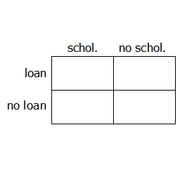 In a survey of 200 college graduates...
In a survey of 200 college graduates...So, we'll add the population here:
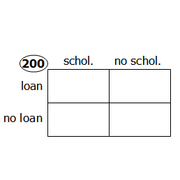 ...30 percent said they had received student loans
...30 percent said they had received student loans30% of 200 = 60, so 60 students received loans, which also means 140 students received no loans.
Add this to our diagram:
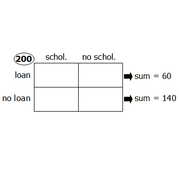 ...and 40 percent said they had received scholarships
...and 40 percent said they had received scholarships40% of 200 = 80, so 80 students received scholarships, which also means 120 students received no scholarships.
Add this to our diagram:
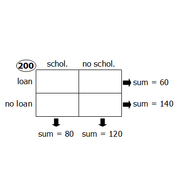 Target question: What percent of those surveyed said that they had received neither student loans nor scholarships during their college careers?
Target question: What percent of those surveyed said that they had received neither student loans nor scholarships during their college careers?Let's place a star in the box that represents this portion of the population to remind us of our goal:
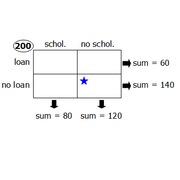 Statement 1: 25 percent of those surveyed said that they had received scholarships but no loans
Statement 1: 25 percent of those surveyed said that they had received scholarships but no loans 25% of 200 = 50, so 50 students can be placed in the following box:
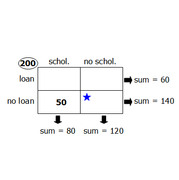
Since the boxes in the bottom row must add to 140, we can determine the value that goes in the starred box:
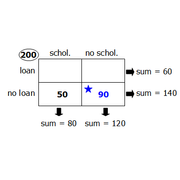
So,
90 students received neither student loans nor scholarships.
Since we can answer the
target question with certainty, statement 1 is SUFFICIENT
At this point, we'll revert back to the diagram we created with the given information:
 Statement 2: 50 percent of those surveyed who said that they had received loans also said that they had received scholarships.
Statement 2: 50 percent of those surveyed who said that they had received loans also said that they had received scholarships.Our diagram tells us that 60 students received loans.
50% of 60 = 30, so 30 students received loans AND scholarships
We can place this information as follows:
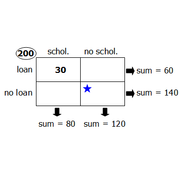
Since the boxes in the left-hand column row must add to 80, we can determine the value that goes in the bottom-left box:
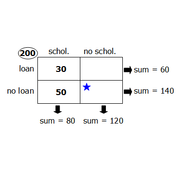
Next, since the boxes in the bottom row must add to 140, we can determine the value that goes in the starred box:
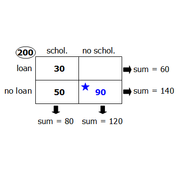
So,
90 students received neither student loans nor scholarships.
Since we can answer the
target question with certainty, statement 2 is SUFFICIENT
Answer: D
Cheers,
Brent
This question type is
VERY COMMON on the GMAT, so be sure to master the technique.
To learn more about the Double Matrix Method, watch this video:



 15%
(low)
15%
(low)
 17%
(02:14)
wrong
17%
(02:14)
wrong  based on 2973
sessions
based on 2973
sessions






















